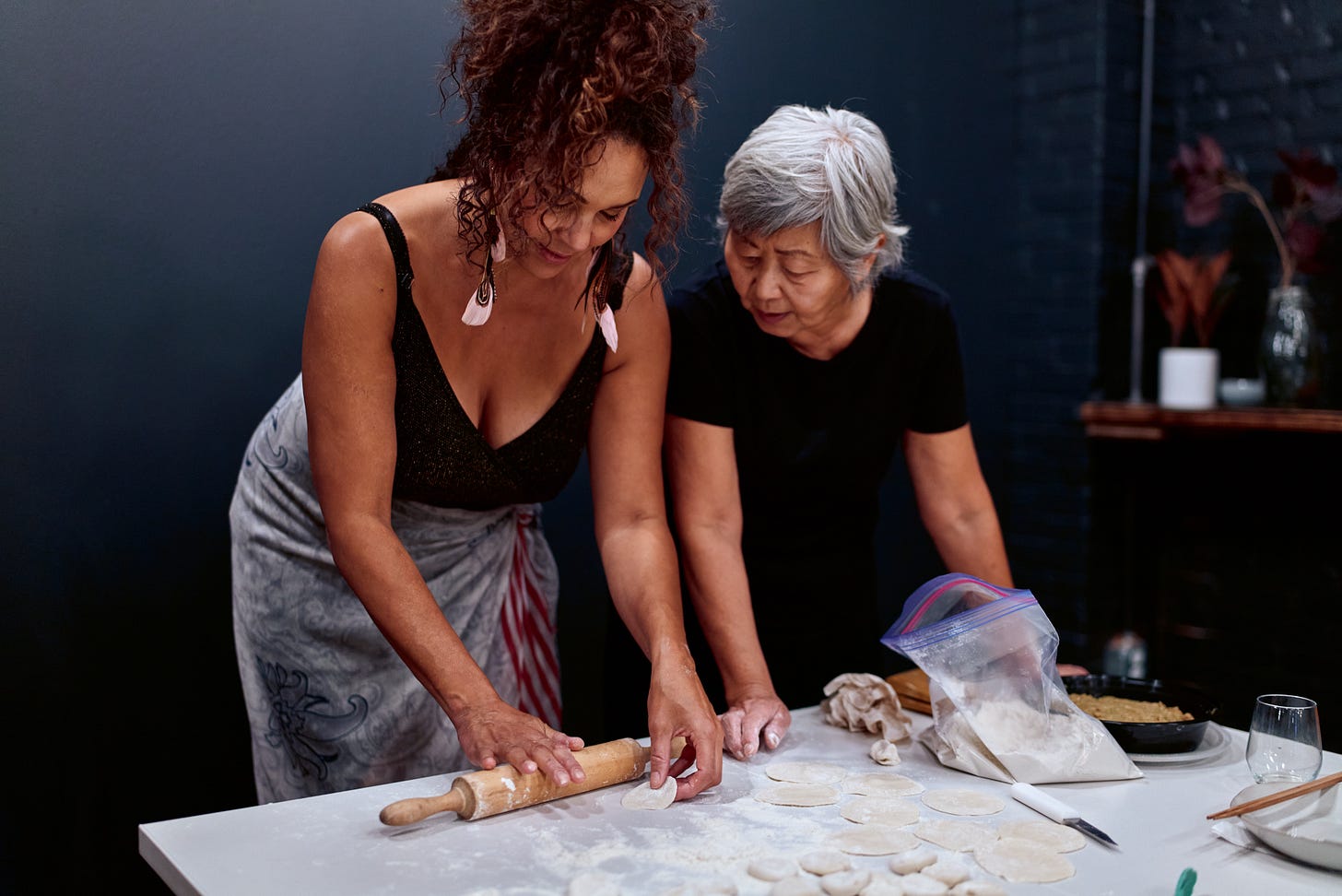Mecca Bos + BIPOC Foodways Alliance
Breaking down cultural barriers through food + culture, eating, and other stuff
“You can never depend on the mass media to reflect us or our needs or our states of mind. . . with enough gestures we can deafen the satellites and lift the curtains surrounding the control room.”
-David Wojnarowicz, artist and activist
People always think that writing is hard.
And they’re correct about that. But after 25 years in this business, I’ll let you in on a little secret: The hardest part about writing is not the writing. It’s convincing gatekeepers that your story is a worthy one.
I started thinking about all that gets missed (and dismissed) when, as artists, we only get to tell the stories that mainstream media deems worthy.
As a food writer, I spent many years writing about restaurants. And I love restaurants. I do— I’m sitting at one right now as I write this. Restaurants are places that we can go to buy food, get out of the house, and go and have a good time.
But a restaurant is rarely the place you should go to get a good story. To get a true sense of what food— and culture (often what we are seeking when we eat food) is all about, we need to look further than the restaurant.
We demand “authenticity” from our restaurants, but restaurants can rarely offer authenticity (whatever that means) because restaurants are a business, rooted in capitalism, and they must first and foremost keep their eye on the bottom line.
By nature, restaurant owners (and chefs) are people with more resources than the average person, and as it turns out, the average person is who you want to go to for your true culinary wisdom and knowledge.
Average people: women, women of color, elders, and immigrant communities. These are the stories that get lost when we wait for mainstream media to deem a story worthy of attention, and these stories are everything.
Women are the rulers of the home kitchen, and the home kitchen is where cultural culinary legacy gets passed down, generation after generation. Through the hands of women.
At BIPOC Foodways Alliance, we focus on the stories of these women (and sometimes men too— who are more often than not imparting the wisdom of their mother or their grandmother).
Here, we will archive, uplift, and share these stories.
You will also get general writing from me, which will include:
-Travel notes
-Culture stuff
-Stories from my life and home
-"25 minutes on. . . " essays
-Sean’s record recs
-More!
WHAT YOU CAN FIND HERE:
Official BIPOC Foodways Alliance (BFA) stories:
Maryan Abdinur on keeping her Somali story– and adding to it
The Mims, Rondo, and Black joy
Hawk Communion: a place for rest
Tastes Like Africa
A mom shows her son how masa makes family
A Chinese New Year staple, Jiaozi make this small family big– all year long
Kealoha and Kalaunuola Domingo serve Hawaiian culture as a tool for understanding everything
BFA Newsletters and Notes:
Last night I dined with the world
Happy Summer from BIPOC Foodways Alliance!
Happy Spring Forward from BIPOC Foodways Alliance!
HAPPY BIPOC NEW YEAR!
What is BIPOC Foodways Alliance and Why Do We Need it Now?
Travel Notes + Eating Recs:
Here are our Mexico City dining recs
What you fall in love with when you fall in love with Oaxaca
Indigenous migrants rights activists Odelia Romero & Poncho Martinez (+ Sean's record picks!
Being a service worker in Dubai can be terrible
Dubai and death: a travel note
Food and travel notes on Berlin
You should travel so that you can feel dumb. . .
Seven 2023 "Mostly Manhattan" Dining Recs
Culture :
Watch Martha for the feminist documentary it is, but watch Megan Thee Stallion, too
Minneapolis is city with few Black-owned restaurants-- which means they matter even more
When racism actually hurts
Biracial Bullshit
Minneapolis is city with few Black-owned restaurants-- which means they matter even more
“25 minutes on”:
25 minutes on: desperately having to pee
25 minutes on: The cricket in our house
Notes from my life and home:
When in doubt, make pot roast + Sean’s top 6 protest songs




